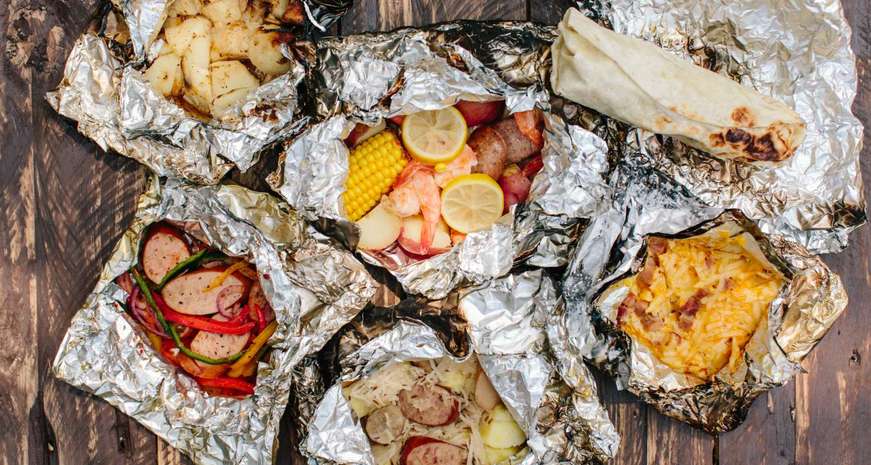How to achieve perfectly cooked and portioned meals every time using just aluminum foil

It’s not quite an Instant Pot or a sheet pan, but plain aluminum foil provides the same alluring quality made popular by the two cooking tools — a “one and done” technique that makes cooking and clean-up so fast and easy, you’ll have plenty of time to make dessert.
In many home kitchens today, a roll of aluminum foil is just one arm’s reach away, tucked in a kitchen cabinet next to extra trash bags and sponges. However, foil was not always a home kitchen regular. In its early stages over 100 years ago, foil was originally made with tin and used mostly for industrial purposes. It was no wonder, as tin foil transferred a less-than-appealing metallic taste to food when used as a wrap. In 1910, tin was replaced with taste-hazard-free aluminum, and the food packaging scene began to eat it up — but not literally, of course.
Aluminum foil’s popularity within the commercial food industry comes from its ability to block light, moisture, and therefore bacteria from reaching packaged food, which preserves the food and ensures freshness without the need for refrigeration.
Those same protective qualities make aluminum foil the perfect vessel with which to cook. When a foil packet is sealed with some type of liquid inside, the steam generated provides a gentle cooking environment that allows food to retain moisture and flavor. But the best part about cooking with foil, we think, is hands down the hands-free aspect it provides once in the oven.
Assembling your foil packets
To begin assembling your foil packet, tear off large rectangular sheets of aluminum foil. Your foil sheets should be large enough to wrap completely around all ingredients and to create a tight seal. We recommend using heavy duty foil to comfortably hold all ingredients without fear tearing. If you plan to cook directly on an open flame, such as a grill or campfire, use a double layer of foil for added protection.
Next, prepare your ingredients. Choosing ingredients to build a foil packet isn’t exactly a science, but it is important to keep in mind different cooking times. Potatoes take longer to cook than tender greens like asparagus and broccoli. Cutting up ingredients that take longer to cook into smaller pieces, or even pre-cooking some ingredients, helps ensure that all foods inside cook evenly.
Divide your ingredients in the center of each spread of foil, then apply the seasoning and added flavors of your choice. Herbs and spices provide a flavor boost to proteins and vegetables, but it’s important to remember that most of the cooking will be accomplished by steam, so adding a liquid like broth or wine will lend plenty of moisture. To ascertain that the foods inside your foil pouches do not simply taste as if they’ve been boiled, add a touch of richness in the form of butter or a good extra virgin olive oil.
The trick to properly sealing your foil packet lies in tightly pinching and folding the ends together. After your ingredients are assembled in the middle of each foil spread, bring the long ends together, crease over a few times and pinch tightly. Repeat the same process with the short ends, until a flat packet forms.
Cooking your foil packets
You’ve arrived at the easiest step when cooking with foil packets. After assembling and sealing your packet, simply stick it in the oven or on top of a campfire. Moving your foil packet around once or twice during its time in the heat will ensure all ingredients in the packet are cooked through evenly. The longer you leave it in one place over direct heat, the higher the likelihood of developing caramelization. For example, foods like smoked sausage or thinly sliced vegetables benefit from the potential browning, while items like fish benefit from more gentle, indirect heat.
Another benefit of cooking with foil is that you can always peek inside to check doneness and return it to the heat source if necessary. Once you remove them from the heat, keep the packet sealed to retain as much heat as possible before you’re ready to serve.
The next time you have a busy night or just want to throw together a quick meal without dealing with hours of prep and dishwashing, roll out the aluminum foil and you’ve got dinner in the pouch.